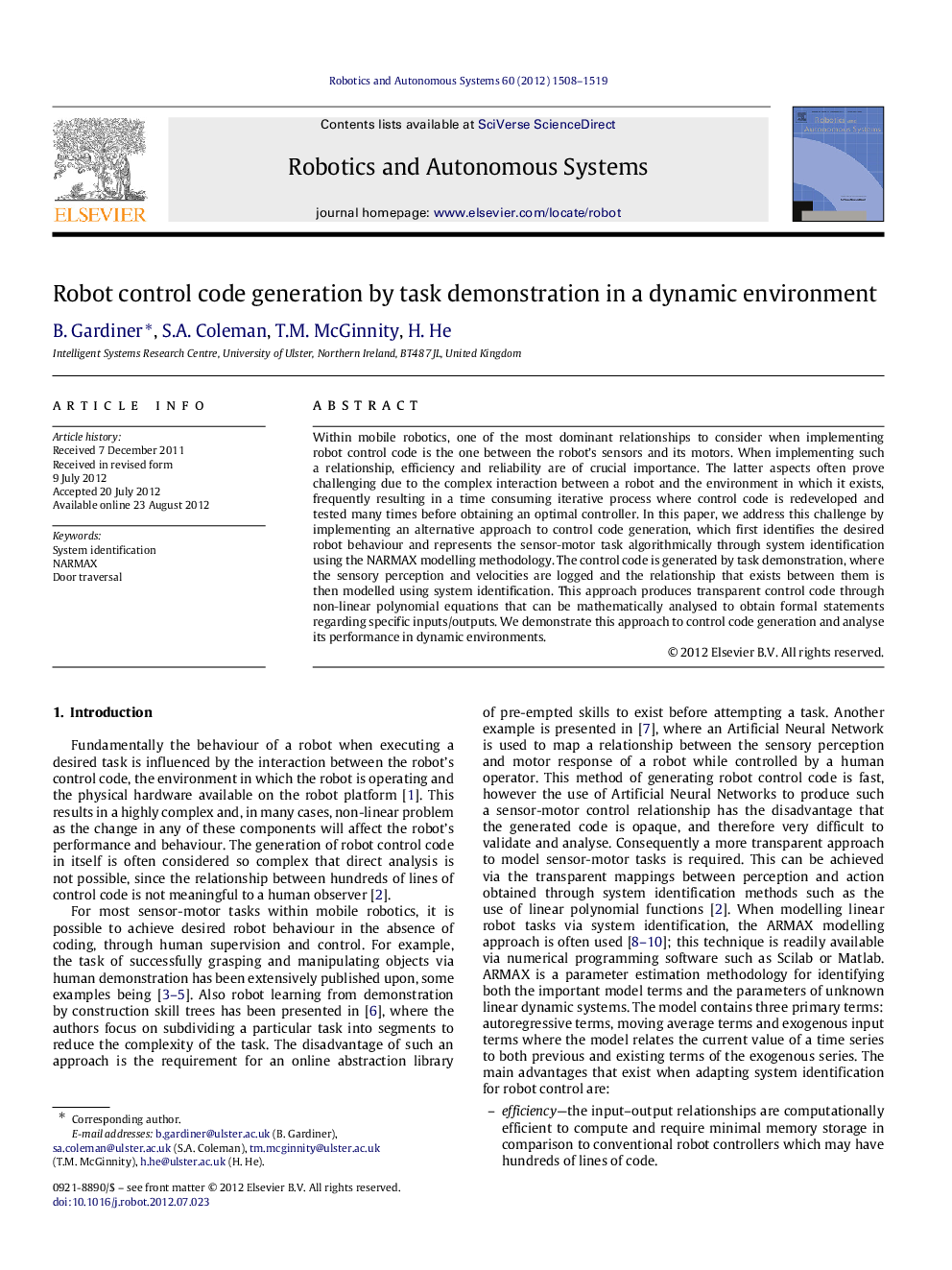| کد مقاله | کد نشریه | سال انتشار | مقاله انگلیسی | نسخه تمام متن |
|---|---|---|---|---|
| 411826 | 679592 | 2012 | 12 صفحه PDF | دانلود رایگان |

Within mobile robotics, one of the most dominant relationships to consider when implementing robot control code is the one between the robot’s sensors and its motors. When implementing such a relationship, efficiency and reliability are of crucial importance. The latter aspects often prove challenging due to the complex interaction between a robot and the environment in which it exists, frequently resulting in a time consuming iterative process where control code is redeveloped and tested many times before obtaining an optimal controller. In this paper, we address this challenge by implementing an alternative approach to control code generation, which first identifies the desired robot behaviour and represents the sensor-motor task algorithmically through system identification using the NARMAX modelling methodology. The control code is generated by task demonstration, where the sensory perception and velocities are logged and the relationship that exists between them is then modelled using system identification. This approach produces transparent control code through non-linear polynomial equations that can be mathematically analysed to obtain formal statements regarding specific inputs/outputs. We demonstrate this approach to control code generation and analyse its performance in dynamic environments.
► Presented the use of system identification to generate robot control code by demonstration.
► Experimental work focuses on door traversal task in a dynamic environment.
► Robot control code reuse was discussed also in this manuscript.
► Results presented include both qualitative and quantitative approaches.
Journal: Robotics and Autonomous Systems - Volume 60, Issue 12, December 2012, Pages 1508–1519